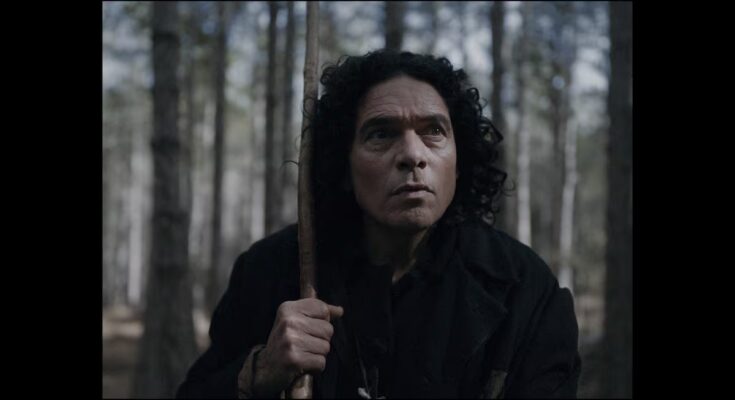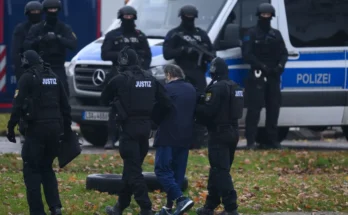Interior, during the day. A dark room without a horizon. Even so, outside you can feel a rural atmosphere, a Spain at the dawn of the 20th century. Sitting in a rocking chair, a mother holds a baby in her arms. Standing on one side is the father and on the other the doctor, who blurts out, in an indigenous dialect between Catalan and Valencian: “She’s small.” “Safe?” the father replies. And it’s all said there. It is the beginning, but also a declaration of intent Els mals noms, the highly anticipated first film by filmmaker Marc Ortiz Prades (La Sènia, Tarragona, 46 years old), premiered this week at the Seville European Film Festival.
Ortiz Prades – trained at ESCAC, the Escola Superior de Cinema i Audiovisuals de Catalunya – has chosen for his cinematic debut the historical reparation of a real character, an intersex person registered at birth as Teresa – but who could finally die like Florencio – who marked his childhood, when he spent the summers at his grandmother’s house in La Pobla de Benifassà, a town of 213 inhabitants in the province of Castellón, with a magnetic mountainous landscape landscape. and of rupture that surrounds the entire film, and which serves as a precise metaphor in the service of the story: an isolated enclave with one foot in Catalonia, another in Aragon and another in the Valencian Community; and where its inhabitants, mostly dedicated to pastoralism, use a dialect that may sound like Valencian for the Catalans and Catalan for the Valencians. “There is a value in the language and in the landscape in the reclamation of identity,” its director explained to EL PAÍS this Sunday, passing through Seville.
Parallels can also be found in those diffuse boundaries, when you are nowhere and everywhere at the same time. This is the case of the born Teresa Pla Meseguer, later known as La Pastora and who converted after the war into the last Valencian Mediterranean scrub. A real figure, but also a legend – very black – for which she was defined as monstrous “and many other adjectives that I would like not to remember”, insists Ortiz Prades, who thriller disguised as biopic portrays under siege by the Civil Guard.
When the director was a child, in 1980s Spain, La Pastora had already become a myth: “Don’t be late from the mountain, La Pastora will come to get you”; “Go to sleep or I’ll call La Pastora”, a sort of bogeyman of the area who in reality was nothing more than the scapegoat – her intersexuality was used and manipulated by Franco’s propaganda – on whom the military coup of 1936 and the subsequent terrible repression of the dictatorship foisted all the unsolved crimes in the area, “when she almost didn’t know how to use weapons”, says the director.
Ortiz Prades, an expert historian, collected for this story the oral memory that was part of the city’s routine to strip the official history of its marked hatred for difference: “I wanted to remove the mythology of a monster, of a murderer” and present the character imprisoned in his own body, in a suffocating rural environment and in a polarized, crude and cruel Spain that lived oppressed by military power. In fact, the incredible story of La Pastora, first Teresa and finally Florencio Pla Maseguer, takes on epic dimensions when, after thirty years of life as a woman, she was forced to join the guerrilla war – the Mediterranean scrub – to escape the Guardia Civil. He was the only survivor of his command and, miraculously, was able to escape to France and start a new life as what he has always been: a man.
The film, however, tiptoes around issues of identity, through the character’s contained desire and sexuality. “We wanted to be deeply respectful of Florencio and his story, trying not to judge, but rather to understand his reasons for doing what he does, which is to survive and little else. When the doctor says that the child is a girl and the father questions everything, everything is said, you already know that there is something strange and there is nothing left to explain. I like to be austere,” says Marc Ortiz, who also wrote the film’s screenplay.
This austerity is also brought by the director towards a staging dominated by naturalism, by the choice of the original dialect as the language of the film and by filming in the natural environments in which the story takes place. All this at the service of a six-act chronicle (which develops from the character’s childhood, youth and adult life) of the conquest of the name by which that man wanted to be recognized.

Three actors give life, first to Teresa, then to Teresot (a name with particular pejorative accents that marked her adolescence and youth) and finally to Durruti, the “not at all random” pseudonym that she chose to join the mafia, and Florencio. The boy Adriá Nebot, the young Álex Bausá and, finally, the actor Pablo Molinero give life to a character “that the three of them built as a team”. “Florencio was a multi-faceted character,” insists the director, who at the end of the film shows several real photographs of his physical and identity evolution. “He doesn’t fully define himself because he doesn’t know how to define himself, he also enters the bush without ideological convictions.”
Perhaps everything is explained in a moment in the film when a fellow guerrilla, one afternoon watching the hours pass in the open mountains, lends him a dictionary and tells him “there you can find all the words that exist”. “They’re not all there, because I’m not there.”



